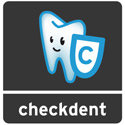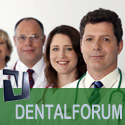Our appearance is influenced by many different factors, one of the biggest being our teeth!
–
Health, beauty and feeling good are becoming ever more important in the industrialized countries. One interesting aspect is that ideals diverge in the northern and southern countries of Europe, in the South (for example Spain, Italy, Greece, etc.) having gaps in your teeth is very common if you live in the countryside.
–
A mouth full of healthy teeth tends to be the exception rather than the rule, it is more common to be gap-toothed. And although city-dwellers tend to have less gaps, they do not pay much attention to the appearance of the teeth they do have.
–
 Gold teeth, bad crowns, ugly amalgamate fillings and/or and or badly made plastic fillings are the norm!
Gold teeth, bad crowns, ugly amalgamate fillings and/or and or badly made plastic fillings are the norm!
–
In the more northern countries of Europe (Austria, Switzerland, the Netherlands, Germany, …) you will rarely find such poor work. If you do, then the person probably could not afford better work. There is a definite trend towards „White“.
–
The concept of „aesthetic dentistry“ came to us from the USA. White is not enough – everything has to look natural and teeth are not totally white!
–
Ironically, Galip Gürel – a Turk – is the chairperson of the Association for “Aesthetic Dentistry”. There is a trend towards teeth that look more natural. Teeth like those of the former Austrian Chancellor Dr. Klima are a sign that incompetent dentists and dental technicians were at work.
A crown need not be visible, much less a plastic filling in the front (picture above)! These are works of art, which not all dental technicians can master, and crowns such as this can cost €1500-2000.
–
A €500 crown stays visible, but should not cause any inflammation and/or recession of the gums – a groove cut and threads should be the standard nowadays, no matter the look!








